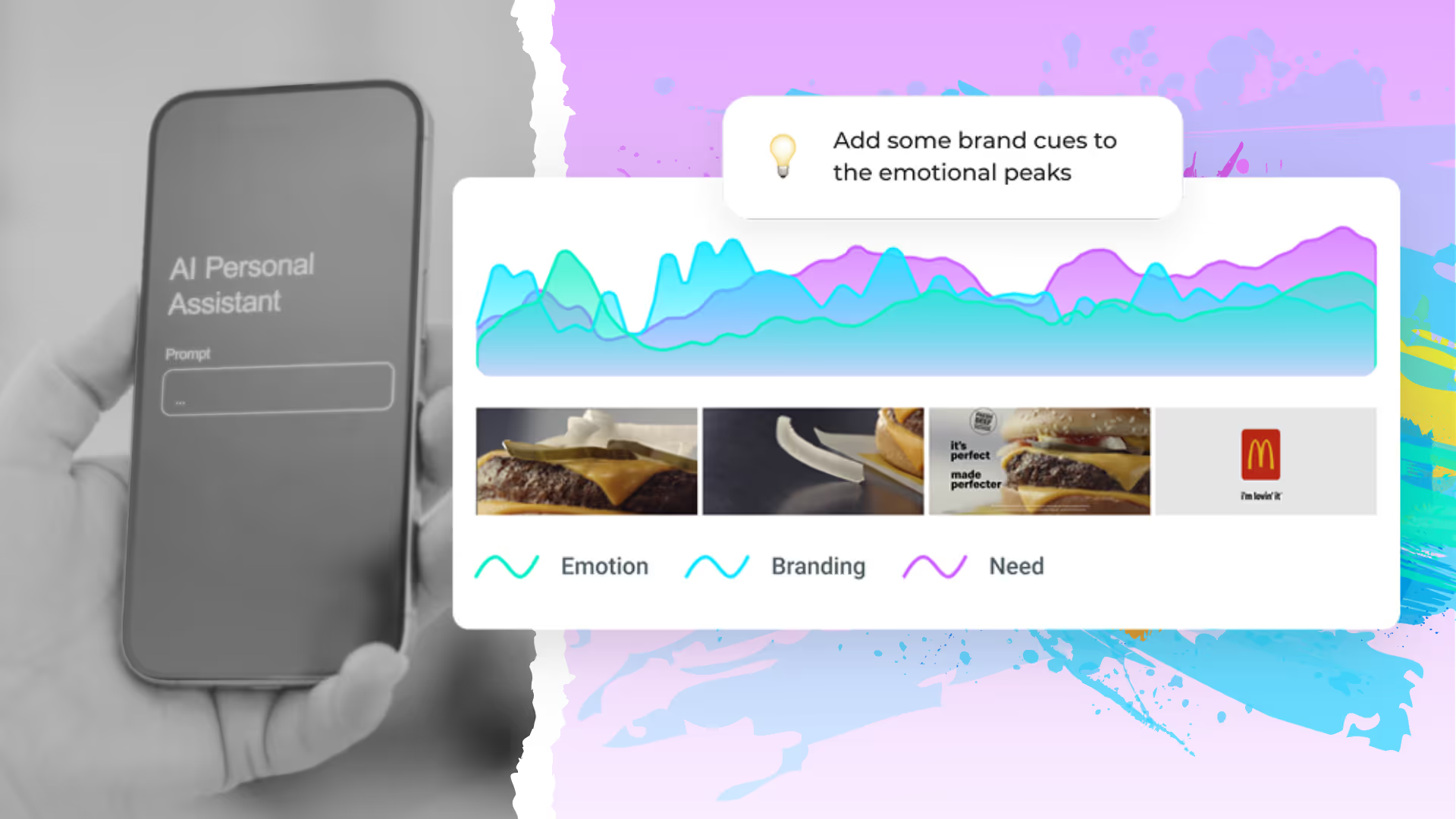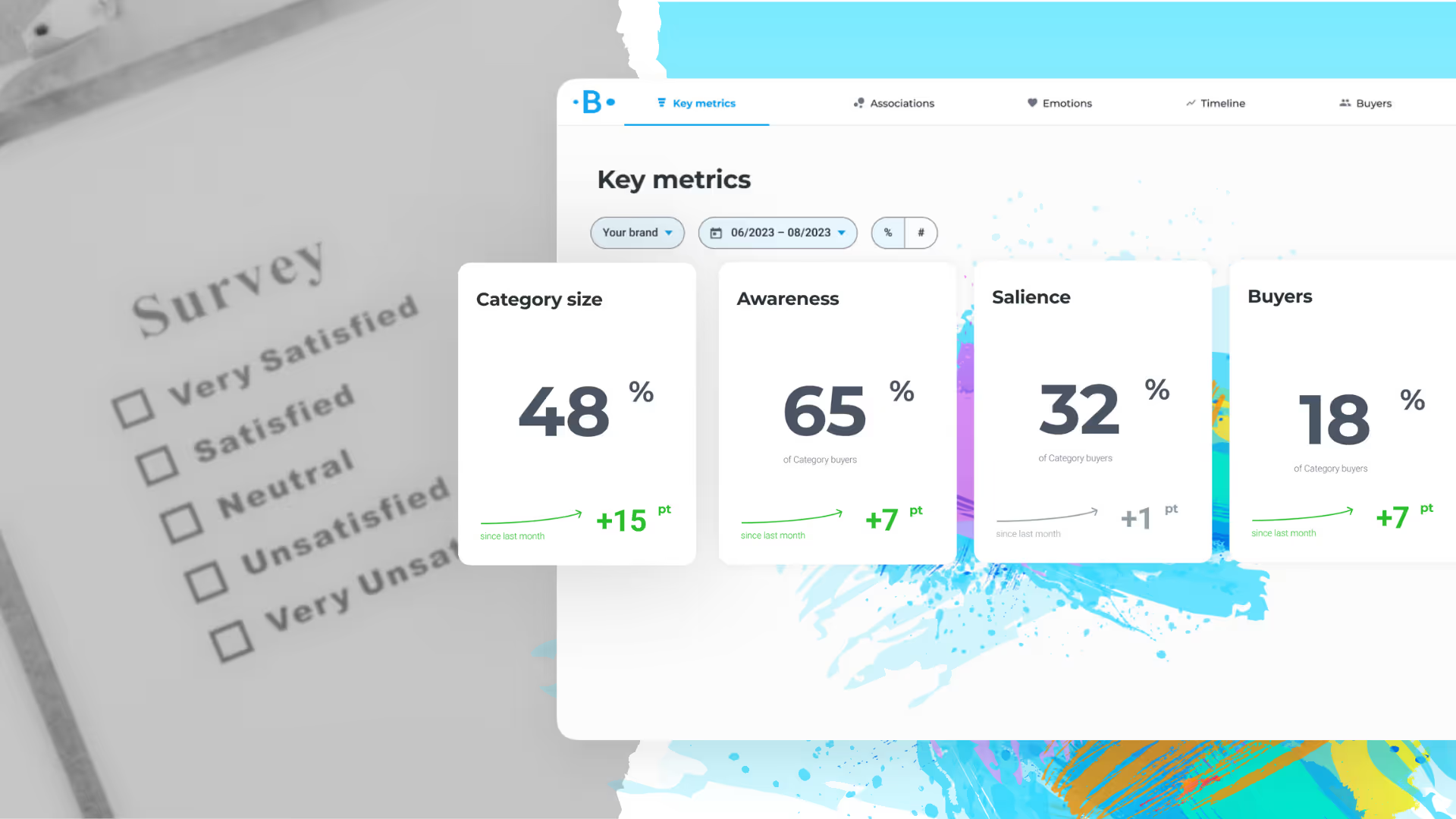As Jenni Romaniuk explains in Better Brand Health: Measures and Metrics for a How Brands Grow World, brand health goes far beyond awareness scores or short-term performance; it involves building the mental structures that influence purchasing decisions—also known as mental availability.
What is brand health?
Before we dive into the signs your brand health may be suffering, let’s first begin by defining the term itself.
Brand health essentially measures how well your brand performs in consumers' minds and in the marketplace.
It encompasses how easily people recognize your brand (brand awareness), what they associate with it (brand associations), how positively they feel about it (brand sentiment), and how likely they are to choose it over others (brand preference).
Strong brand health means your brand occupies a clear, positive, and relevant space in consumers' minds that translates into purchasing behavior. To manage and grow this, marketers must track the right brand health metrics and use them to inform brand strategy.
Why does brand health matter?
Brand health isn’t just a marketing metric, it’s a company-wide asset that's intertwined with long-term growth. A strong and healthy brand helps you attract new customers, boost brand awareness, and deliver better customer experiences across all touchpoints.
When your brand is in good health, people trust it. And trust is essential—81% of consumers say they need to trust a brand before they’ll buy from it.
Healthy brands also create consistent, compelling brand experiences that resonate with customers, employees, and stakeholders alike. They’re more resilient in crowded markets and more likely to grow in both mental availability (how easily your brand comes to mind) and physical availability (how easy it is to buy your product).
On the flip side, neglecting your brand’s health can lead to missed opportunities and even brand reputation crises. That’s why regularly measuring brand health is critical, not just to track progress, but to uncover weaknesses, adjust strategy, and refine your product and messaging.
In short: a healthy brand isn’t optional. It’s the foundation of long-term success. Now, here are 10 early signs that your brand health might be in trouble.
10 signs that your brand health might be suffering
1. Declining market share
Perhaps the most obvious indicator of declining brand health is a shrinking market share. When customers begin choosing competitors over your brand, it suggests your brand's relevance, appeal, or perceived value is weakening.
This decline may be gradual at first, but even small shifts can signal the beginning of a larger trend. As Jenni Romaniuk from the Ehrenberg-Bass Institute notes, brand decline often happens through a slow erosion where competitors collectively chip away at your position in consumers' minds.
👀 What to watch for:
Monitor overall and segment-level market share alongside your Share of Voice (SOV) and Share of Market (SOM). A declining SOV/SOM ratio suggests underinvestment in brand marketing.
2. Quiet customer churn and declining loyalty
Declining customer retention and increased churn rates are clear warning signs of brand health issues. But the more concerning trend is when customers quietly reduce their purchase frequency or spend less per transaction without formally leaving.
Brands can appear healthy based on surface-level metrics while facing serious underlying issues.
The most concerning aspect is that customers often begin mentally disengaging from your brand long before this behavior appears in your traditional financial measurements. This gradual mental check-out creates a lag between when problems begin and when they become obvious in standard reports.
👀 What to watch for:
Monitor changes in purchase frequency, basket size, and category-level purchasing behavior, not just retention rates. These earlier indicators can reveal declining brand health before customers completely switch to competitors.
3. Reduced brand buzz and media interest
When your brand stops generating organic conversation, coverage, and interest, it suggests declining cultural relevance. Healthy brands naturally create buzz—they're discussed in industry publications, on social media, and among consumers.
A drop in unprompted mentions or media coverage indicates your brand may be losing its cultural currency. This is particularly concerning if competitors are simultaneously gaining attention, suggesting a shift in category interest rather than an overall category decline.
👀 What to watch for:
Track unprompted brand mentions, social media engagement rates, press coverage, and search volume trends compared to both historical performance and key competitors.

4. Inconsistent brand experience
When customers receive different messages, service levels, or quality depending on how they interact with your brand, it creates confusion and erodes trust. This inconsistency manifests in several concrete ways:
- Your website promises quick customer service, but your call center keeps people waiting for 20+ minutes
- Your in-store staff lacks knowledge about promotions advertised online
- Product quality varies noticeably between different locations or channels
- Your social media voice is casual and friendly, but your email communications are formal and stiff
- Different departments make contradictory promises to the same customers
These discrepancies aren't just operational issues, they fragment how consumers perceive your brand. In today's world where customers might research on mobile, purchase on desktop, and seek support in-store all for a single transaction, these inconsistencies become glaringly obvious.
Customers notice when your right-hand doesn't know what your left is doing, and this damages their confidence in your brand as a whole.
👀 What to watch for:
Monitor customer complaints about conflicting information or experiences. Review your brand voice guidelines and customer service standards across all touchpoints to identify misalignments.
5. Negative or declining brand sentiment
Brand sentiment—how positively or negatively consumers feel about your brand—is a leading indicator of brand health. Declining sentiment often precedes declining sales, as emotional connections to brands typically drive purchasing behavior far more than rational considerations, making sentiment deterioration a serious warning sign.
For established brands, this is particularly concerning, as their strength often depends more on deep trust and positive feelings than mere recognition.
👀 What to watch for:
Track sentiment across multiple sources: social media, reviews, surveys, and direct feedback. Pay particular attention to shifts in sentiment among your most valuable customer segments and potential new buyers.
6. Your brand feels "stale"
When employees, partners, and consumers start seeing your brand as outdated or uninspiring, it indicates declining brand health.
This perception of staleness often shows up first among those closest to the brand—your team may struggle to feel excited about your offerings, or long-time customers may express that you're no longer as relevant as you once were.
👀 What to watch for:
Conduct regular internal brand assessment surveys with employees. Monitor how often your brand is described with terms like "innovative," "exciting," or "forward-thinking" versus words like "traditional," "outdated," or "predictable."
7. You're losing Share of Voice
Share of voice—how present your brand is in category conversations relative to competitors—directly impacts mental availability. When your share of voice declines, you become less mentally available to consumers when they're making purchase decisions.
Research shows that maintaining or increasing (excess share of voice) is strongly linked to brand growth. Conversely, when share of voice falls below market share, brands typically contract.
👀 What to watch for:
Track your share of voice across all relevant channels compared to your market share. A declining ratio of share of voice to market share is a particularly concerning indicator.
8. Your brand has lost focus or essence
When your brand tries to be everything to everyone, it risks becoming nothing to anyone. Brand dilution occurs when extensions, messaging, or positioning wander too far from your core essence and strengths.
When examining brand health, one of the most fundamental considerations is whether your brand maintains a clear, coherent strategy, architecture, and positioning. Brands that have lost their focus typically struggle to articulate what they stand for, who they serve, and why they matter.
This lack of clarity inevitably transmits to consumers, who become confused about your brand's purpose and value proposition.
👀 What to watch for:
Conduct a brand audit. Review your product portfolio, messaging, and brand positioning against your core brand essence. Ensure consistency across audiences and channels.
9. You're seen as a commodity
When consumers view your offerings as interchangeable with competitors', your brand health is severely compromised. Commoditization leads to price-based competition, lower margins, and reduced customer loyalty.
Healthy brands maintain meaningful differentiation through mental availability by being readily connected to important category entry points in consumers' minds. When these connections weaken, your brand becomes just another option rather than a preferred choice.
👀 What to watch for:
Monitor price sensitivity among customers and prospects. Track whether your brand commands a price premium and whether that premium is stable or declining. Watch for increasing emphasis on discounting or promotional activity to maintain sales.
10. Your messaging no longer resonates
When your brand messaging fails to connect emotionally or functionally with target audiences, it signals a disconnect between your brand and consumer needs.
This resonance gap may manifest as declining engagement rates, reduced effectiveness of advertising, or feedback that your messaging feels irrelevant.
👀 What to watch for:
Track changes in campaign performance, especially engagement, recall, and emotional response. Listen for signs that your message is being misunderstood or ignored, and review qualitative feedback for clues that your tone or value proposition no longer aligns with your audience.
How modern brand tracking can help you monitor brand health
Traditional brand tracking tools often miss these warning signs of poor brand health because they measure what people say, not what truly drives their behavior. Modern brand tracking based on behavioral science, on the other hand, offers a clearer window into the buyer's mind.
Effective brand tracking should:
- Focus on brand health metrics that predict future buying behavior
- Measure mental availability, not just brand recall
- Connect marketing activities to changes in mental structures
- Benchmark against competitors on key brand health metrics
- Identify early indicators of brand decline before they impact financial performance
- Measure the effectiveness of brand-building initiatives
- Provide actionable insights to improve your brand health, rather than data overload
By tracking mental availability, implicit associations, and emotional connections, Behavio delivers the insights marketers need without the bloat of conventional brand health tracking. And we do it at a fraction of the price.
Ready to diagnose and track brand health? Book a demo!

















